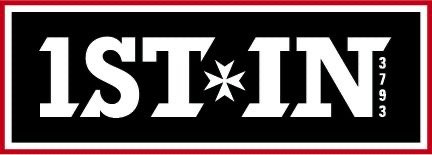Training with your pistol at distance
A recent active shooter incident has highlighted the importance of being able to shoot your pistol with speed and accuracy at distance. That particular event spawned an online challenge that has become known as the Dickens drill—named after the individual involved.
Unfortunately, social media has turned a good example of an armed civilian saving lives into a promotion of bad training principles. The problem is not necessarily with the drill itself but instead the way the drill is usually explained. The course of fire is laid out as follows: From concealment fire 10 rounds in 15 seconds from 40 yards and you are allowed 2 misses—allowed 2 misses. I’ve heard it presented this way multiple times. I don’t know of any other drill where misses are considered acceptable. Ironically, this drill is based on a real-life event in a crowded area so misses should most certainly not be considered okay.
So, if this motivated you to start training at distance with your pistol—great. But make sure the objective of your training is to be as proficient as you can—which means considering misses unacceptable. When I say proficient, I mean your fundamentals are solid, your gun handling is refined (safe manipulations, loading, unloading, clearing malfunctions, etc.) and arguably the most important is your ability to operate under mental and physical stress.
I’ve talked about distance proficiency with a pistol for a long time. But it’s often neglected. Why? Because it’s hard. It’s avoided because no one wants to look bad. And, like everyone at first, I was terrible. However, I realized I needed this skill set because of its utility in everyday life. And when I realized I lacked proficiency, I had to start working on it immediately. I didn’t want to wait for a real-world situation to show me I wasn’t prepared and lacked the skill set to change the momentum of an event.
I began adding in 25 yd B8 practice every single range session both cold and warm. I continue to put the time in at 25 and beyond to this day. I add in 90° and 180° turns from the draw, work slow fire accuracy, push speed on the timer, incorporate multiple threats and so on; everything that is normally practiced at CQB distances. I push myself to try and be as comfortable at 25 and beyond as I am at 5. Is this easy? No, it takes work, and it takes putting yourself out there at the risk of looking bad in front of the 5 yd assassins at the range.
If 25 is not available to you because of range size, then practice at whatever the maximum available is. Scaled dry fire targets like the targets I got from the Ben Stoeger Pro Shop are also a great option. They allow you practice at any distance in your own home. The reward and addition to your skill set is invaluable.
Over the years I’ve heard naive people talk about self-defense not being justifiable past 7 yds. How they arrived at this number I could never figure out. This mentality is dangerous and sets you up for failure. Proficiency with a pistol at distance is necessary because in the real world engagements can easily happen in wide open spaces like parking lots, atriums, and open floor plan big box stores. Grocery store aisles on average are 30 yds long and offer no cover or concealment.
Your EDC is a pistol not a rifle, so being as proficient with it as possible at close range and at distance is imperative. You should be able to use your pistol at any reasonable distance with speed, accuracy, efficiency, movement and most of all accountability. You’re accountable for where those rounds end up, so it is on you to put the time in to seek training, practice and reach an acceptable level of competency.
Just because you carry or have the potential to fight back doesn’t mean you have the ability to fight back. Expose your weaknesses and work to develop them into strengths before your weaknesses expose you. Your skill set needs to be accessible on demand and under stress or it is not a skill set you own.
Expect more from your abilities and push yourself out of your comfort zone.
Prioritize your training.
Build on-demand performance through drills that develop and pressure test speed, accuracy, distance, and movement with your gun.

